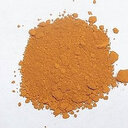Lipids characterization of ultrasound and microwave processed germinated sorghum.
Ključne besede
Povzetek
BACKGROUND
Cereal crops and oilseeds provide diverse pool of fatty acids with characteristic properties. Sorghum (Sorghum bicolor (L.) Moench) provides the staple food with serving as main source of energy and protein. Germination of sorghum generally increases the nutritive value of seeds and the effects of germination on lipids composition of seeds vary greatly with processing conditions. Therefore, the current study was conducted to compare the effect of emerging processing techniques such as ultrasound (US) and microwave (MW) on fatty acids composition and oil yield of sorghum seeds before and after germination.
METHODS
Initially sorghum grains were soaked with 5% NaOCl (sodium hypochlorite) for surface sterilization. Afterwards, grains were soaked in excess water for 22 h at room temperature and were divided into four portions. The first portion (100 g grains) was subjected to germination without applying any microwave and ultrasonic treatment (T0). Second portion was further divided into four groups (T1, T2, T3, T4) (100 g of each group) and grains were subjected to ultrasonic treatments using two different ultrasonic intensities (US1: 40%; US2: 60%) within range of 0-100% and with two different time durations (tUS1: 5 min; tUS2: 10 min) at constant temperature. Third portion was also divided into four groups (T1, T2, T3, T4) (100 g of each group) and exposed to microwave treatments at two different power levels (MW1: 450 watt; MW2: 700 watt) within the range of 100-900 W for two different time durations (tMW1: 15 s; tMW2: 30s). Similarly, fourth portion was divided into four groups (T1, T2, T3, T4) (100 g of each group). Each group was exposed to both MW (MW1, MW2) (100-900 watt power) & US (US1, US2) (0-100% intensity) treatments at two different time levels (tUS, tMW). Then, germination was carried out and pre-treated raw and pre-treated germinated sorghum grains were analyzed for total oil yield, fatty acid composition and unsaturated fatty acids (Un-SFA)/saturated fatty acids (SFA) ratio by gas chromatography.
RESULTS
The results revealed that oil yield in sorghum before and after germination ranged from 6.55 to 7.84% and 6.28 to 7.57%, respectively. All the microwave and ultrasound processed samples showed significant difference in oil yield than the raw sorghum grains. The highest tested yield was 7.84 ± 0.31% when combination of microwave power (700 W) and ultrasound intensity (60%) was applied for 30s and 10 min, respectively. The results further demonstrate that the raw sorghum contained palmitic (13.73 ± 0.10%), palmitoleic (0.43 ± 0.02%), stearic (1.07 ± 0.04%), oleic (37.15 ± 0.10%), linoleic (43.33 ± 0.21%), linolenic (1.55 ± 0.04%), arachidic acid (0.13 ± 0.01%) and eicosenoic acid (0.37 ± 0.02%), respectively. The highest fatty acid percentage for palmitic, stearic and arachidic acid was 13.75 ± 0.07%, 1.11 ± 0.09% and 0.15 ± 0.03% at 60% US intensity for 10 min (T4), respectively. Maximum amount observed was 1.60 ± 0.09% of linolenic acid while amount of eicosenoic acid decreased from 0.37 ± 0.02% to 0.31 ± 0.01% after processing. In case of applying combination of microwave and sonication treatments, the change in eicosenoic acid increased from 0.35 ± 0.02% to 0.40 ± 0.04% while there was no significant change in other fatty acids. The ungerminated sorghum oil possessed 14.93-15.05% and 82.83-83.12% of SFA and Un-SFA, respectively. After germination, percentage of saturated fatty acids increased (16.4-16.55%) while decreased for unsaturated fatty acids (80.13-80.56%) were noted.
CONCLUSIONS
The results of the present study conclude that the yield of oil from sorghum grains increased by emerging processing. Fatty acid analysis of sorghum oil suggested that pre-treatment strategies will not affect the quality of the oil with respect to essential fatty acids content. Overall, the composition of saturated fatty acid in germinated grain is improved than ungerminated grains after processing.


